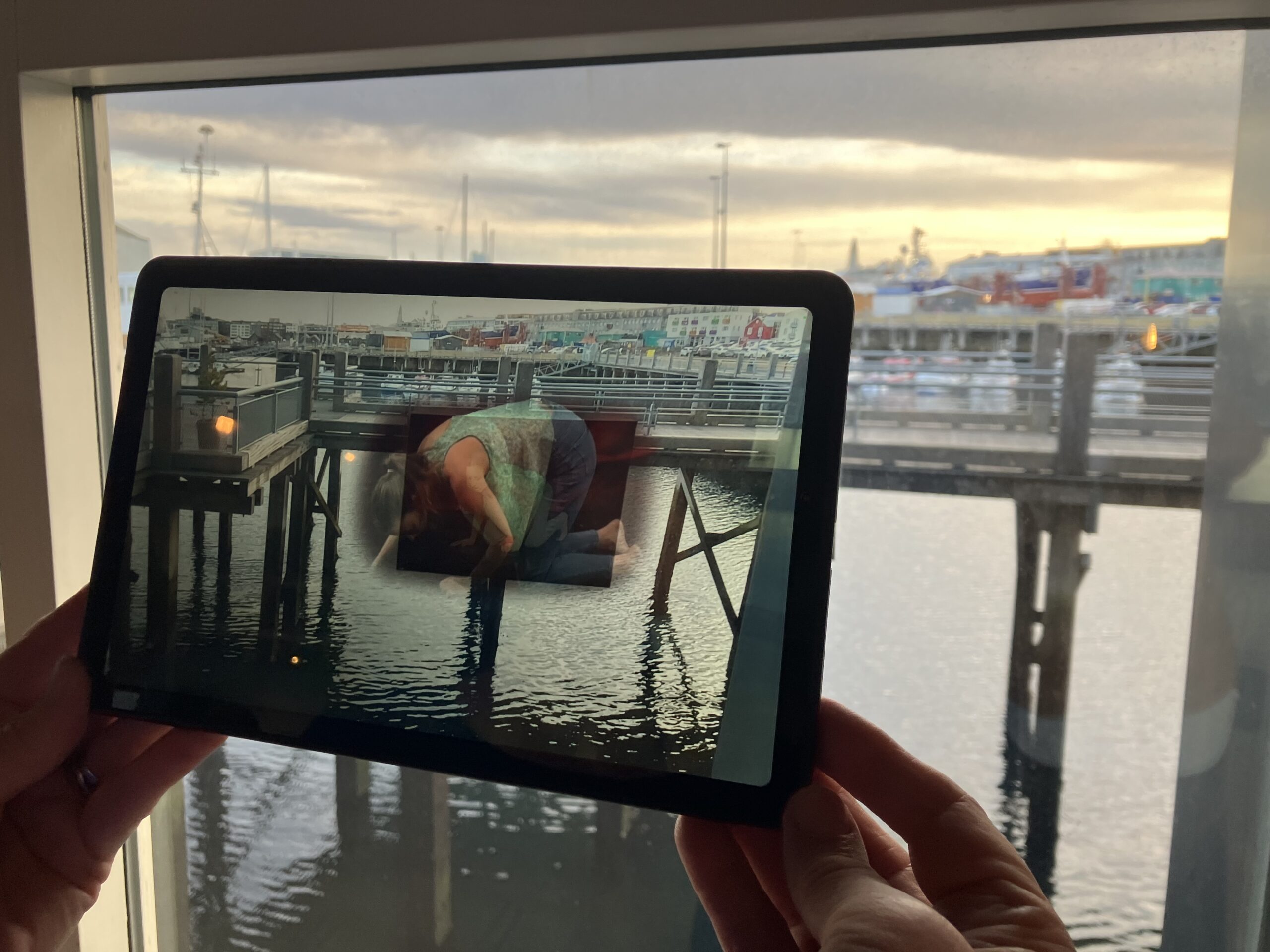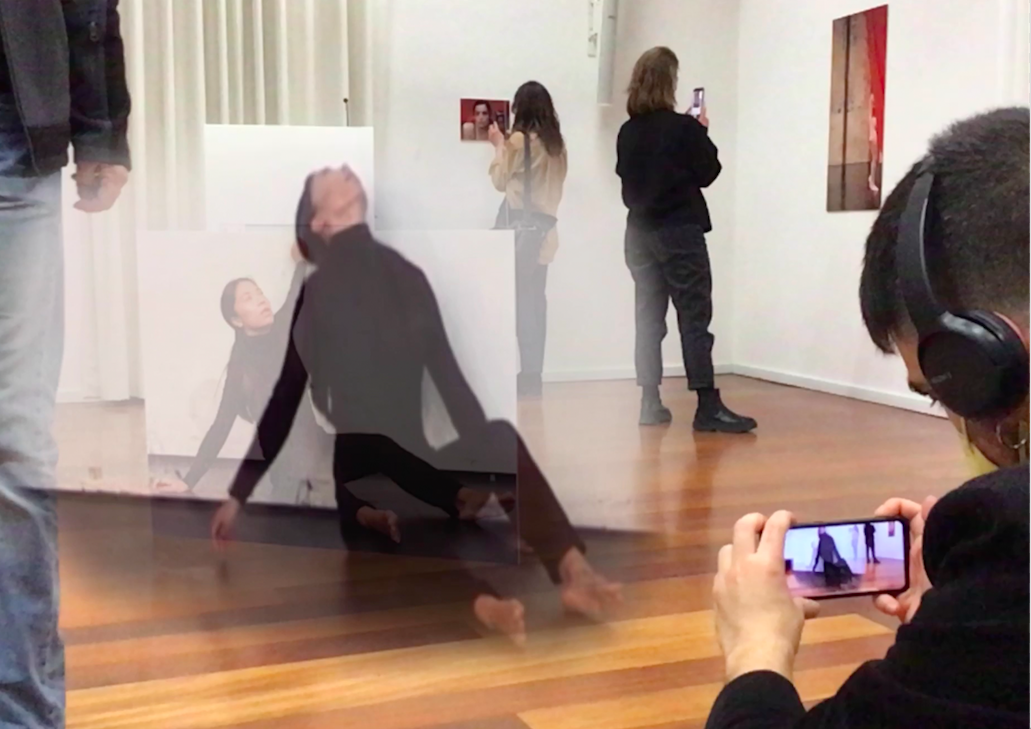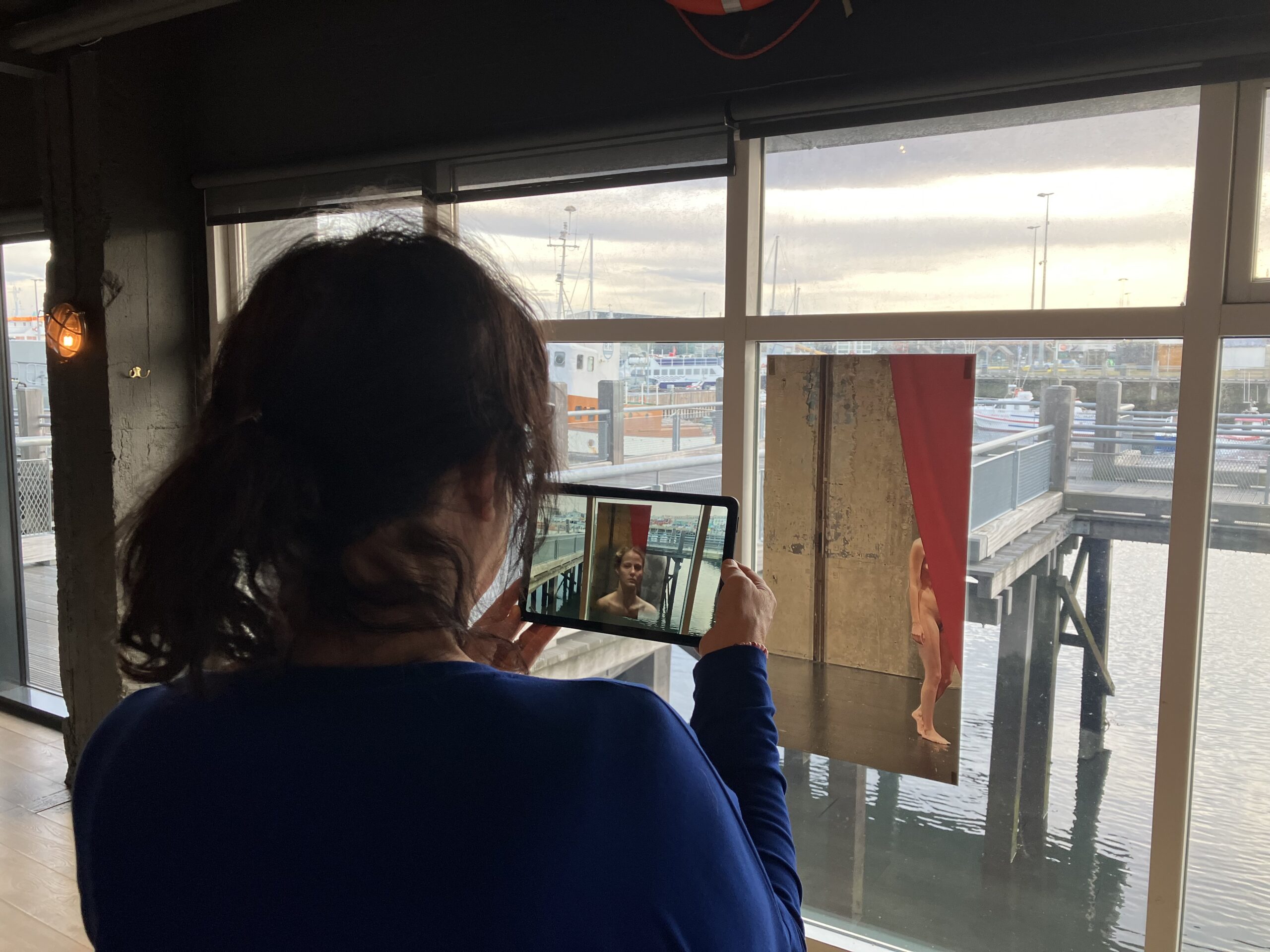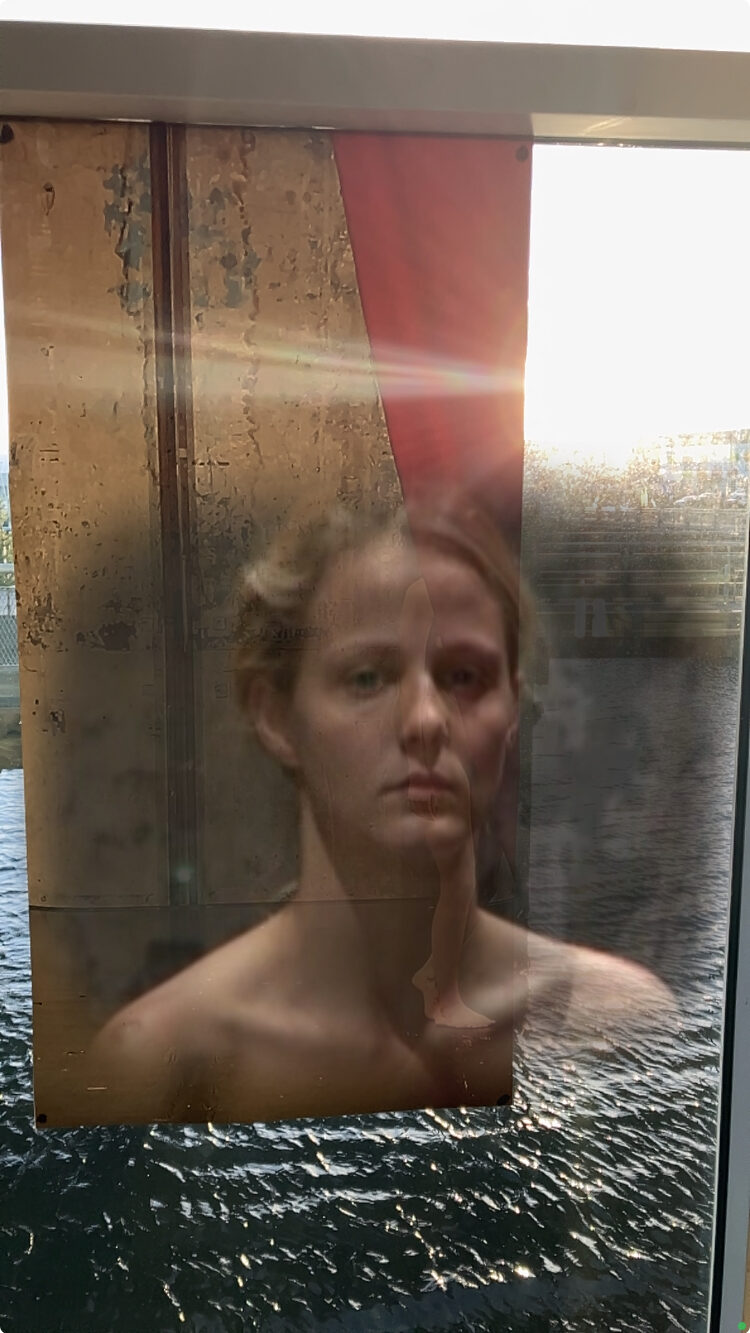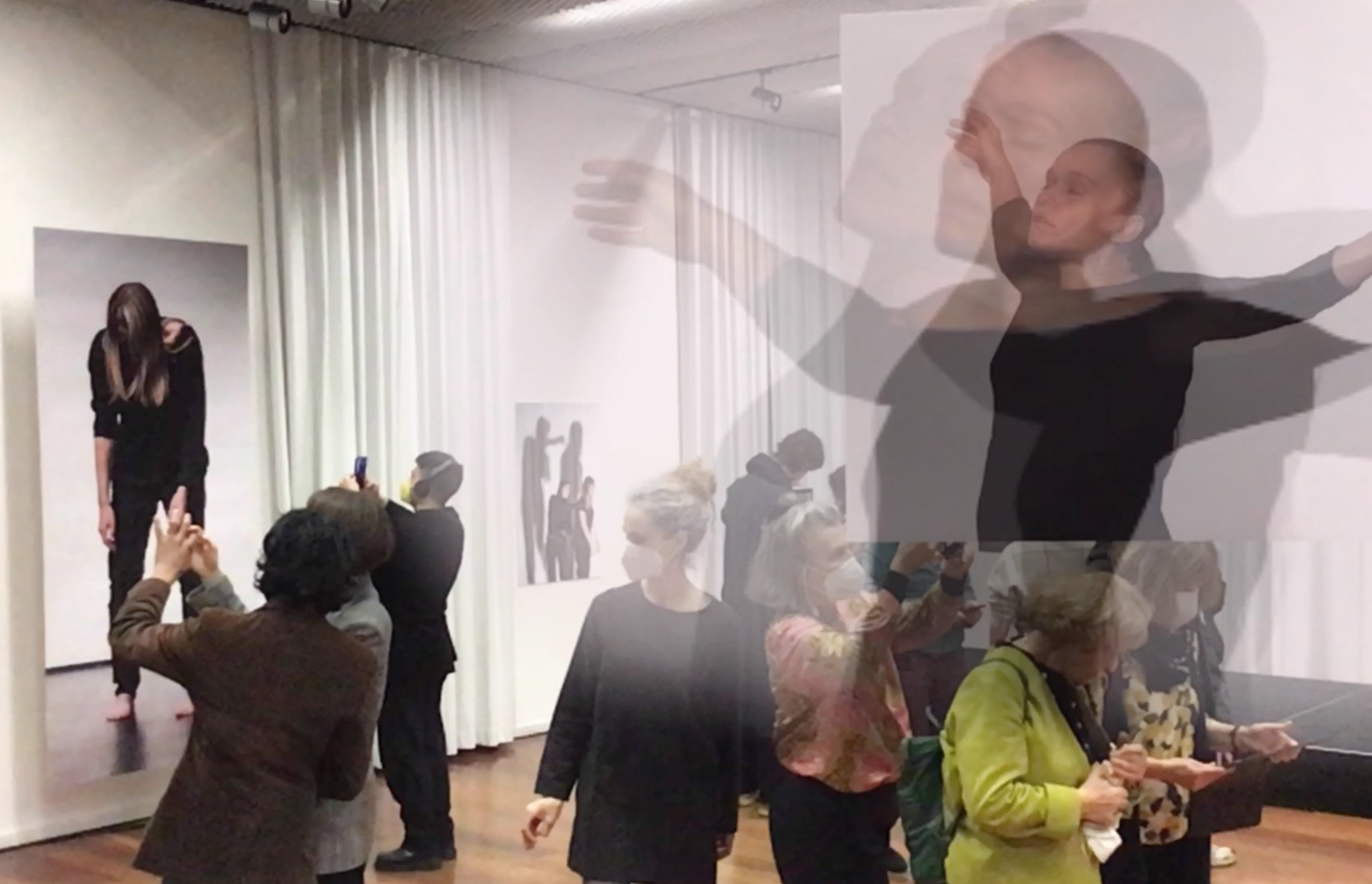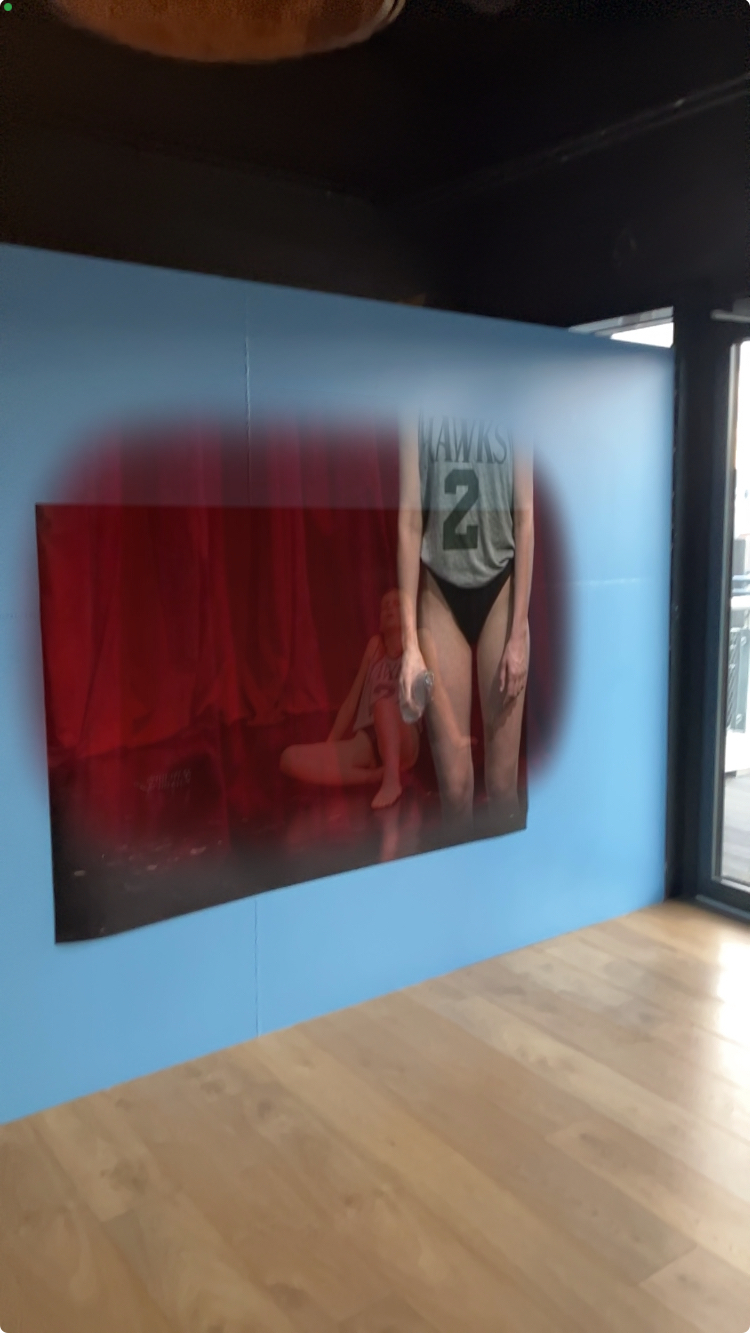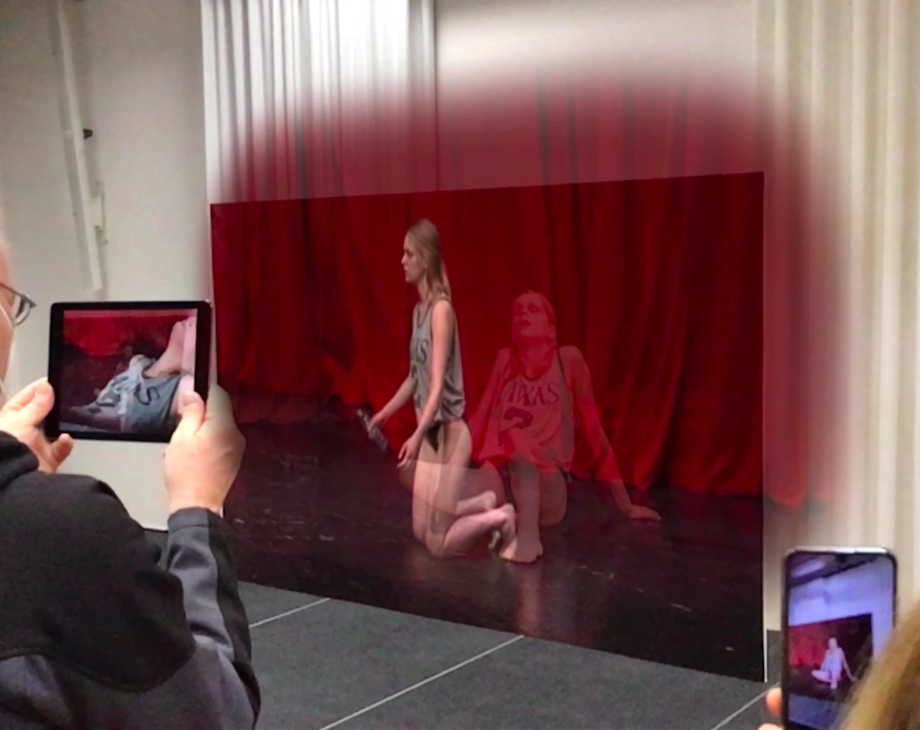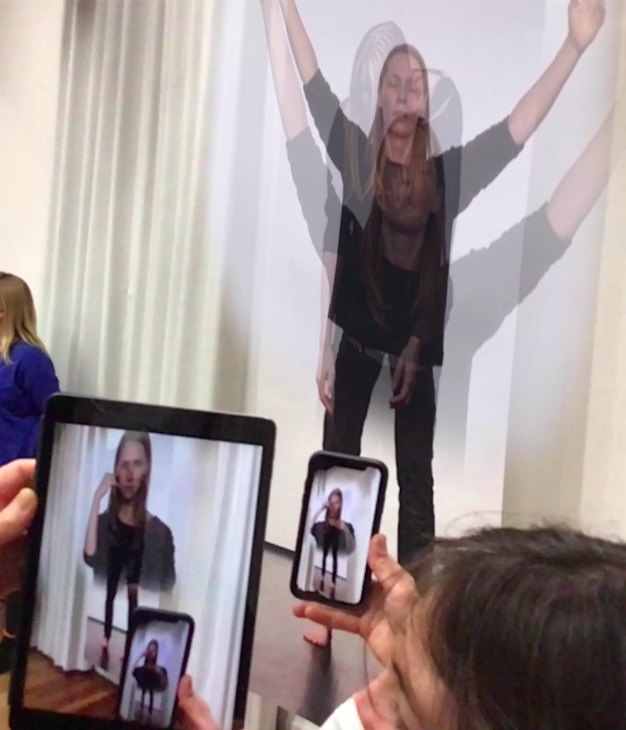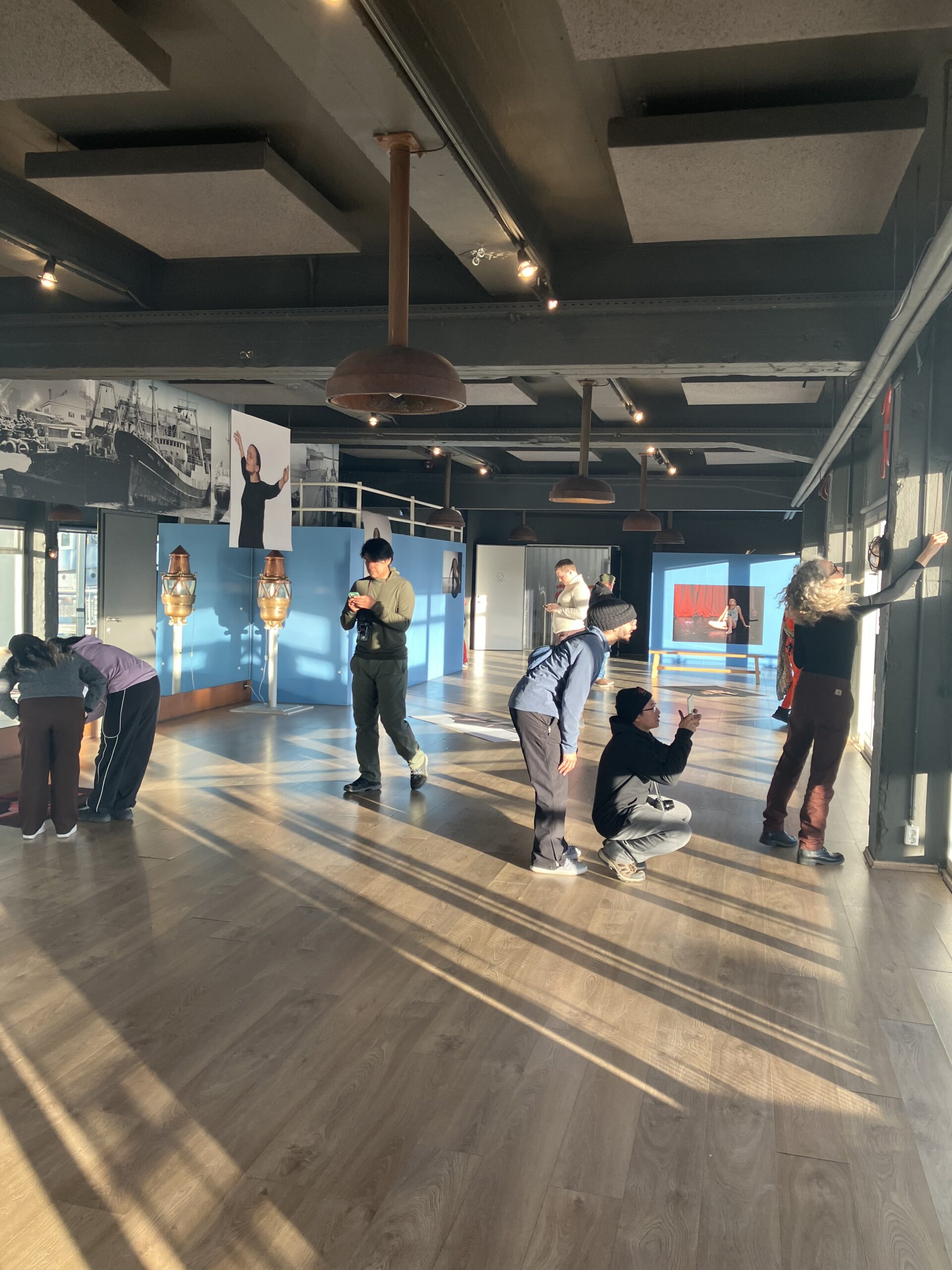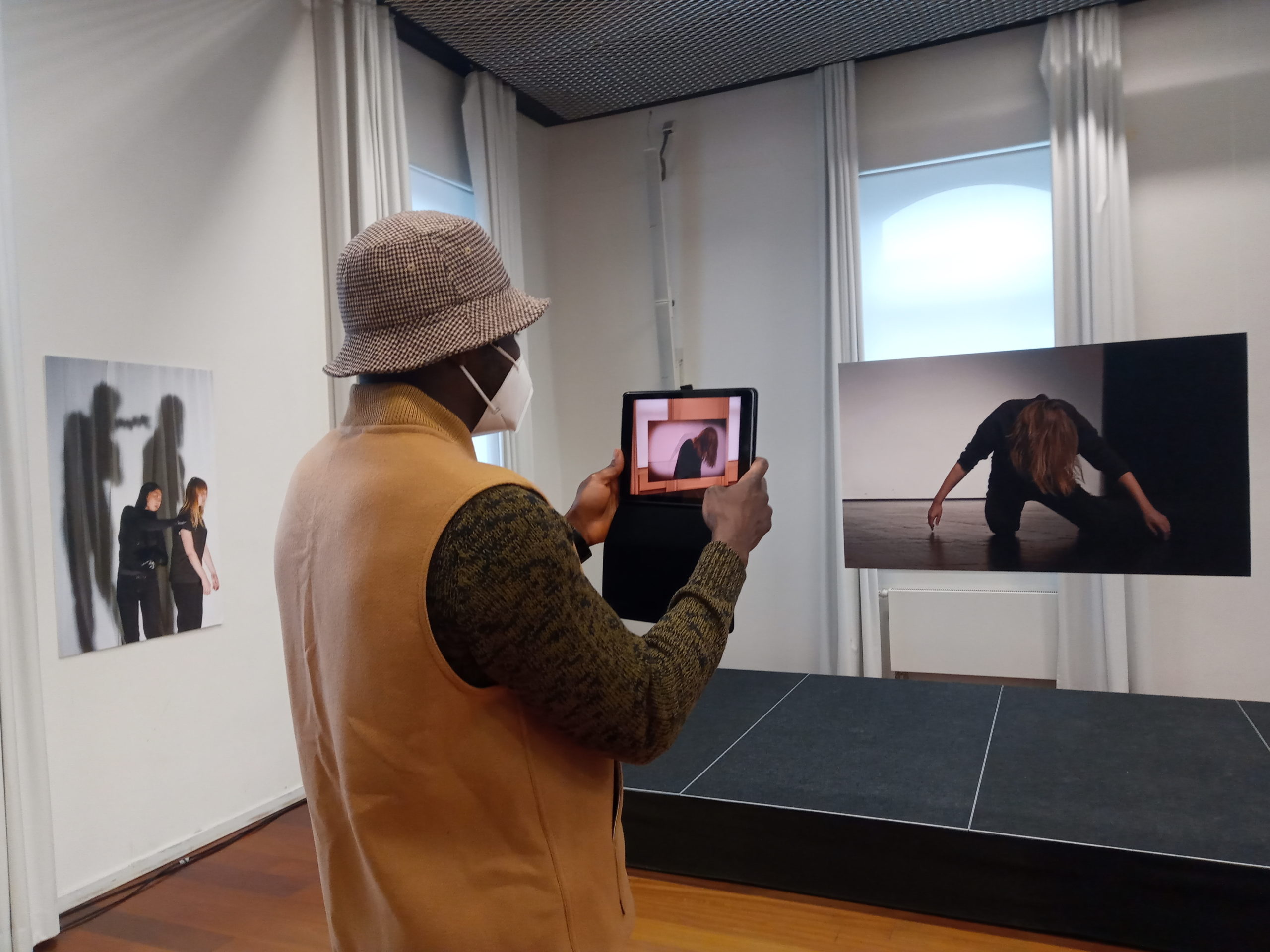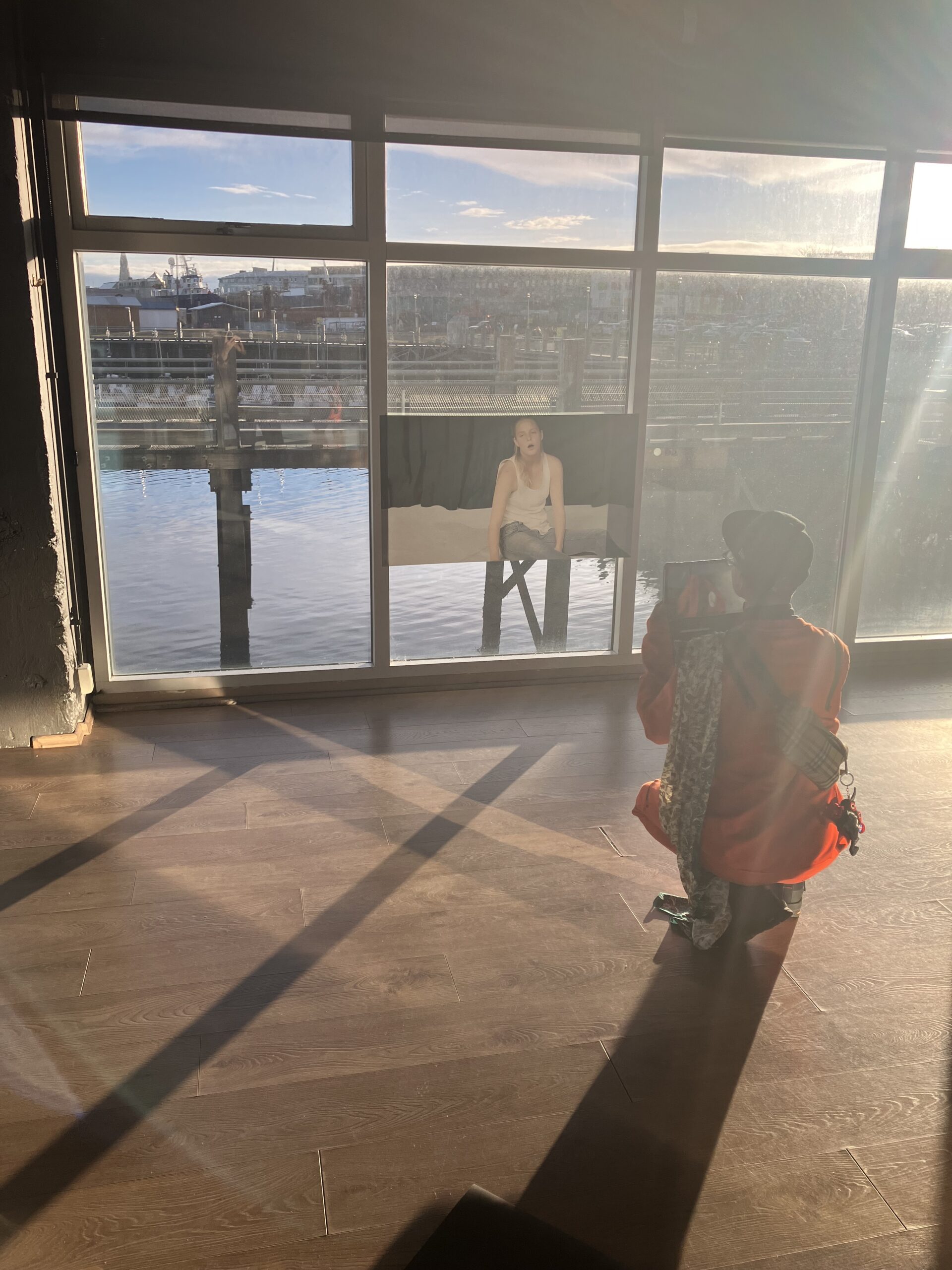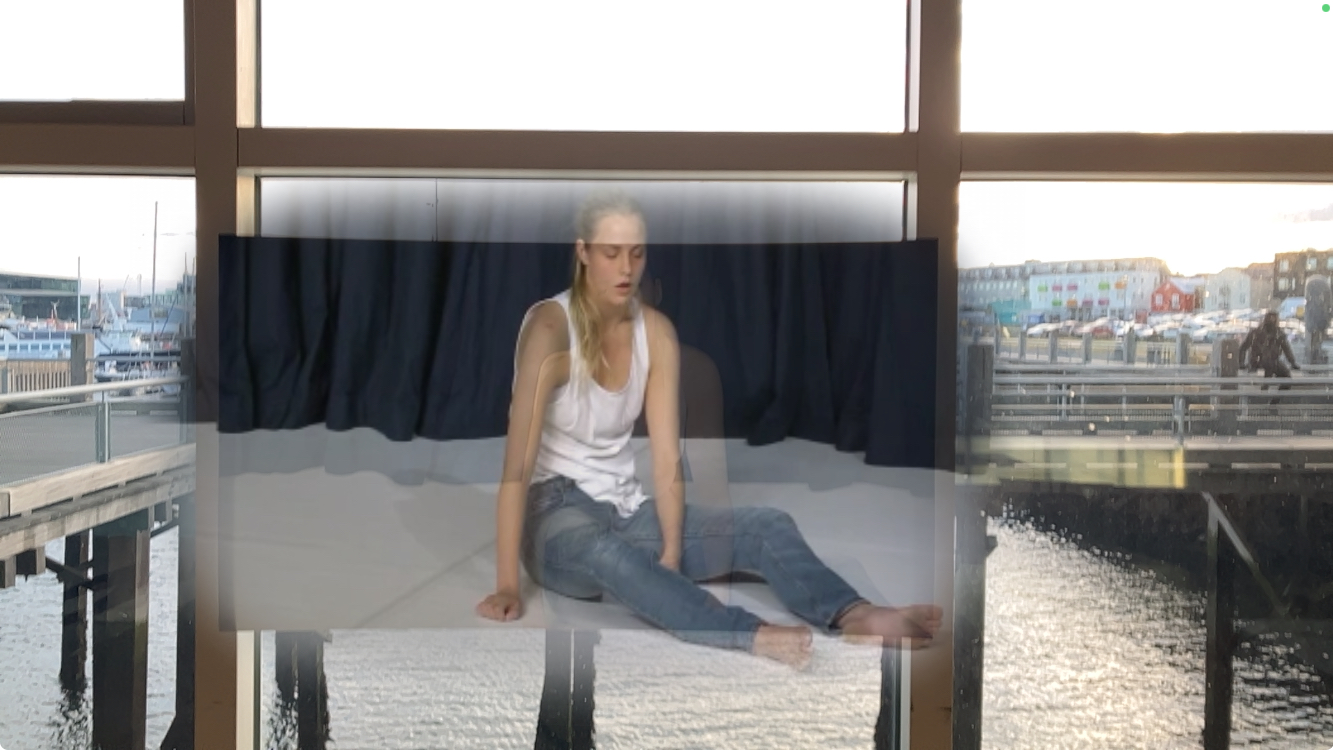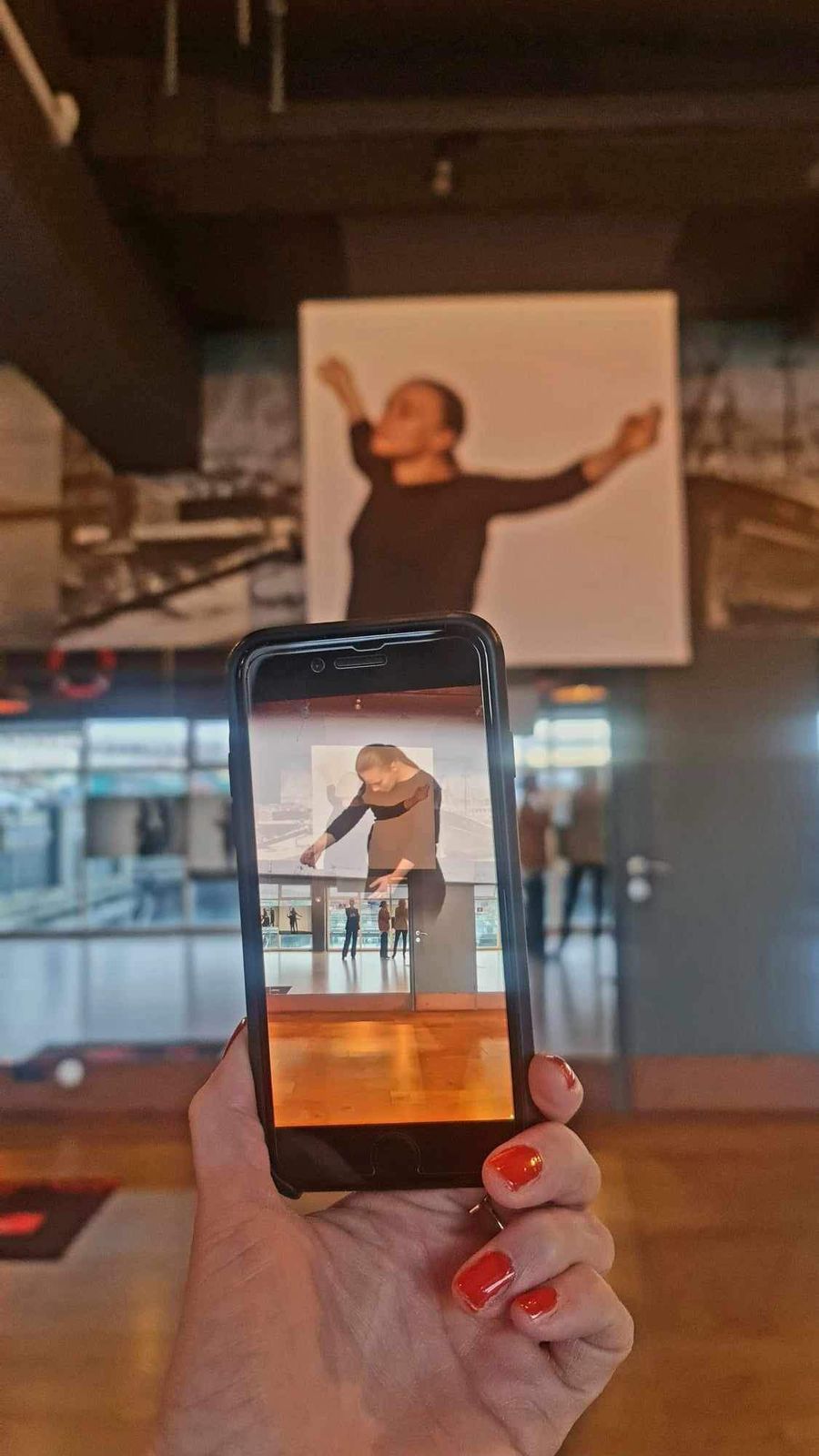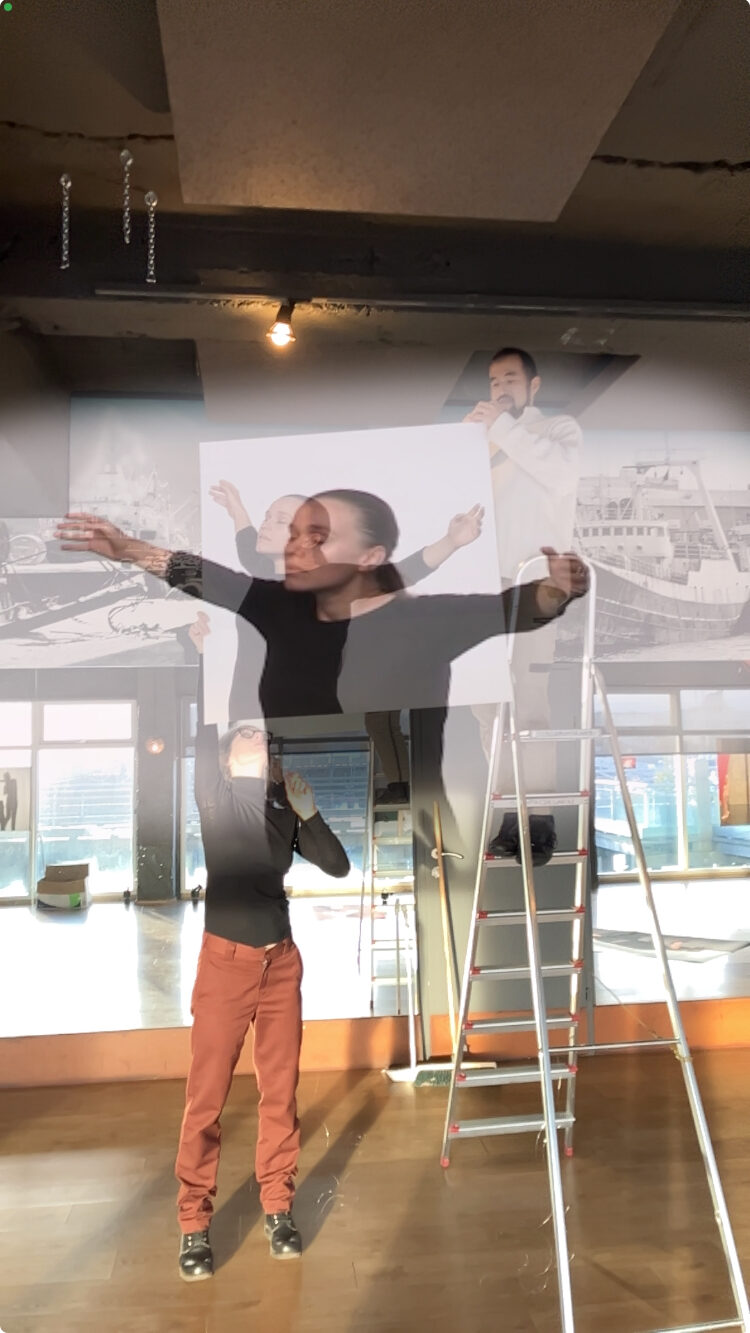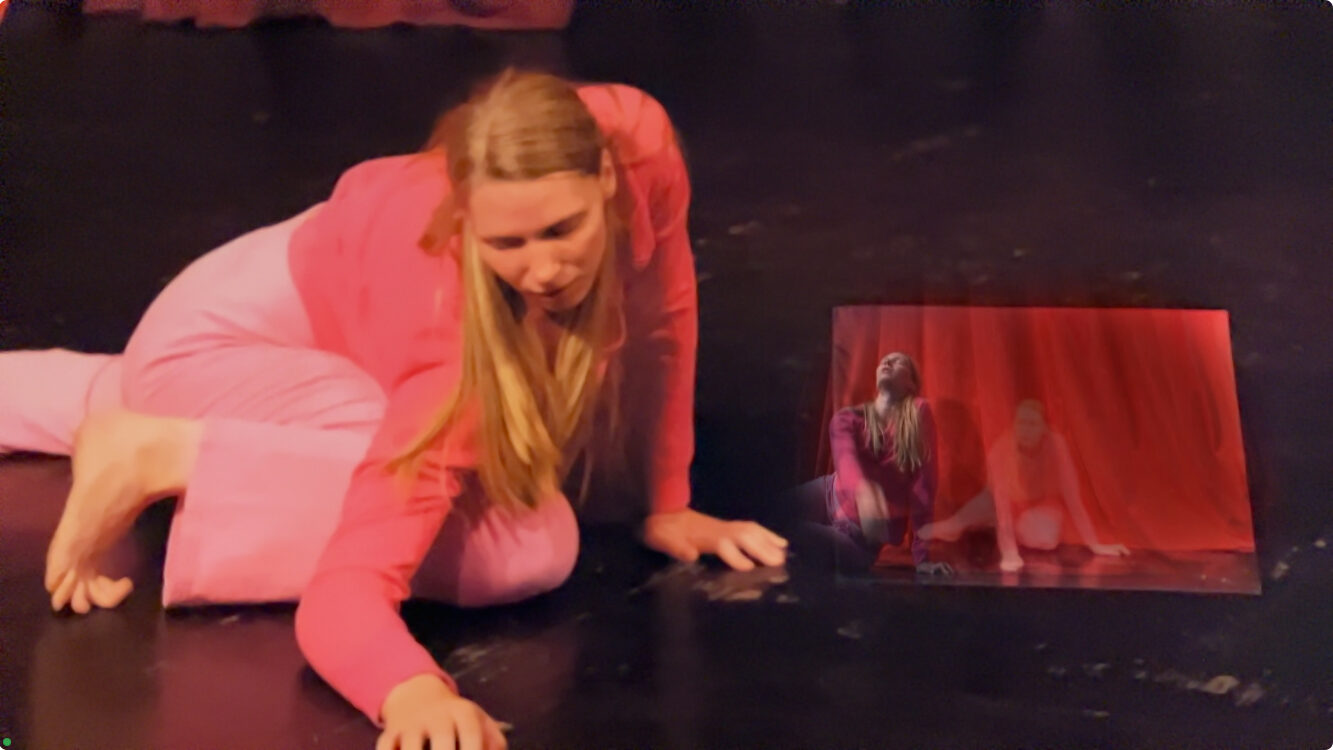Bodily Interfaces/CATALYSTS-Somatic Resonance

Synopsis and credits
Bodily Interfaces/ CATALYSTS – Somatic Resonance, by Margaret Sara Guðjónsdóttir and Susan Kozel, is an installation exhibition of somatic states from the performance works of Icelandic choreographer Margrét Sara Guðjónsdóttir. The art work is a choreography of mixed reality technologies, kinaesthetic algorithms, affects, archival material, and live bodies.
This work is created by an interdisciplinary team of artists and researchers including phenomenologist Susan Kozel, screen dance maker Dr. Jeannette Ginslov, choreographer Margrét Sara Guðjónsdóttir and interactive technologist Keith Lim. It is an intervention in the tensions and potential of current digital cultures. It participates in ongoing discussions around the expanded choreographies of interconnectivity of mediated bodies, healing, feminism, notions of energetic citizenship, AI and the pathology of the wider social-political body within our bodies. Visitors to the exhibition carry the states from this choreographic exhibition outwards, like ripples in a collective somatic field.
In order to enter into dialog with the resonant states of the dancers informed by Guðjónsdóttir’s deep tissue de-conditioning practice FULL DROP into the Body. Visitors are invited to download the CATALYSTS app to immerse themselves in the 14 images that compose the exhibition. Images which are embedded with visuals, triggered by the app the team created. States of affective potential arise from awakening latent energies over time, across media and flesh, expanding what dance can be and how bodies can remember.
Confronting Hyper Reality
Physically, choreographically and dramaturgically Guðjónsdóttir composes performances as highly intensive experiences that alter everyday perception of time and space. They are meant to vibrate energetically at the core of omnipresent pathological states engrained within our body induced by current and ancient conditioning and transference. These embodied pathologies exist in the shadows of what is considered normal life and are conceptually obscure. The work is a gesture to step into this space that needs to be inhabited until a shift happens. By dwelling in these states of incapacity to act, respond, move, feel or escape together with the audience, the commonality of these pathologies is revealed. Even though this is not a comfortable or comforting space to be in, a soft power of resistance is produced. It is this power that is choreographed, not the movements of bodies, but the resonance of the internal movements and energies of the dancers in live performance. The dancers resonate with pathologies that they carry within their bodies, through them we resonate together in a meditative state of reciprocity. Intensity and information ripple outwards. Even though the audience is confronted with pathology, this is done to initiate release and transformation and further reflections on the topic, not to re-traumatize. It is a kind of fictional documentary, but with a different sense of ‘documentary’ and ‘fiction’: it is documentation, because the dancer’s bodies have spent many years doing the practice; it is fiction not in that it is not real, but that it is hyperreal. The altered way the dancers vibrate is an invitation to a body state of affective potential offered by the dancer’s bodies to attune and align the audience’s bodies and thoughts.
This offering happens both in live performance and the archival versions of the work presented in Somatic Archiving, revealing different performative materialization of hyperreality. Somatic Archiving is a project based on interdisciplinary collaboration that uses augmented reality technologies to generate further opportunities for the vibrations of the dancers to radiate into the world. The archive functions in such a way that a somatic body state is viewed through a digital device which induces that state in the viewer’s bodies. In this way rather than using it primarily for commercial purposes the mobile device is re-choreographed into a means for sharing a human experience expanding our digital realities and letting the somatic states of the dancers travel into the wider world. The practice, the performances, and the artistic vision in combination with this archival project, evaporate the context of the theatre and expand what dance can be.
Margrét Sara Guðjónsdóttir and Susan Kozel
Credits
Concept, Choreography & author of performance works and somatic practice: Margrét Sara Guðjónsdóttir:
Philosophy, Archival Concept:Susan Kozel
Editing, Video Creation for Tablet, Visual Concept: Jeannette Ginslov
AR/MR/AI Creation and Interactive Technologist: Keith Lim
Photos by: Lasse Dahl, Jeannette Ginslov, David Kiers, Eva Schmidhuber
Original archival video footage: Jeannette Ginslov, Andrea Keiz, Eva Schmidhuber, Jens Sethzman, Antoine Verbièse
Printing of images: Magnus Denker
Original composed soundtracks: Peter Rehberg
Dancers in archival video footage: Louise Dahl, Catherine Jodoin, Laura Siegmund, Angela Schubot, Marie Topp, Suet- Wan Tsang, Marie Ursin
Production management: Jill Emerson & Till Rothmund
Poster: Studio Bens
Supported by: Fonds Darstellende Künste with funds from the Federal Government Commissioner for Culture and the Media,NEUSTART KULTUR #AUTONOM, co-produced by Data Society Research Program of Malmö University, Inter Arts Centre (IAC), The Ministry of Education, Science and Culture is an Icelandic, ICI Berlin, Open Spaces festival Tanzfabrik Berlin, WUK performing arts.

